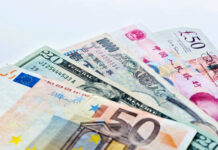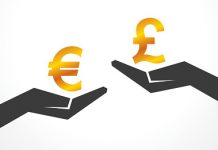Markets
Bank of England officials, including Haskel, Broadbent, Tenreyro and governor Bailey, appeared before parliament today to brief MP’s on monetary policy. The overall tone was balanced and the key takeaway is that “moderate” rate rises are likely in coming months to bring inflation back to target. They pushed back against current hawkish market expectations (>5 rate hikes discounted for the remainder of the year) with Bailey telling markets “not to get carried away”. BoE hawk Ramsden delivered a similar message yesterday. Tenreyro earlier in the testimony warned for the economic risks from quick action on inflation. But she did mention that most inflation shocks are still persistent while Bailey’s biggest concern are second-round effects, referring to companies that are now striking higher wage deals. UK money markets barely reacted and stick to the projected rate path of 1.75% by the end of the year. They still expect policy rates to hit the 1% milestone in May. At that point, the BoE would start actively selling government bonds. This was outlined in the normalization blueprint in August last year. If anything, Bailey nuanced this a bit, saying the central bank “will consider” selling assets. The UK yield curve barely changed and sterling trades a tad weaker post-testimony. EUR/GBP ekes out a small gain from 0.833 to 0.834. GBP/USD continues to hover around the 1.36 pivot.
Trading on other markets was mainly sentiment-driven. Dust settled somewhat after Russia’s Putin recognizing two self-proclaimed separatist republics in eastern Ukraine on Tuesday prompted a series of sanctions by the west. European stocks gain more than 1.2% in a buy-the-rumour, sell-the-fact market reaction. Wall Street opens with gains ranging 0.5-1%. The S&P inches 0.7% higher after it entered correction territory yesterday. Core bonds remain under selling pressure. The US curve flattens with yields 3.3 bps (30y) to 4.9 bps (2y) higher. German yields rise 5.6 bps at the front end and trade 1.8 bps higher in the 10y tenor. European swap yields take it up a notch with the 10y yield (0.857%) closing in on the previous recovery highs (0.874%) again after the 10 bps setback last week. The kiwi dollar on FX markets is the star performer. The currency profits from the RBNZ this morning hiking rates, lifting the rate path and preparing for quantitative tightening. EUR/NZD (1.667) loses support at 1.68 while NZD/USD tests important resistance at 0.68. Other commodity currencies (CAD, NOK and AUD) have a good run as well today. The euro is trading heavy but the dollar is a little worse off. EUR/USD rises marginally from 1.132 to 1.134. The trade-weighted greenback (DXY) eases to 95.93.
News Headlines
Czech National Bank governor Rusnok said in an interview on public radio that developments in Ukraine mean that price growth may ease at a slower pace than outlined in the latest projections. He didn’t rule out the possibility of a further policy rate rise – also following a higher January CPI release (9.9% Y/Y) – to combat this inflation risk, but added that any such move would certainly not a steep one. During this tightening cycle, the CNB already used 75 bps (twice), 100 bps and 125 bps rate hikes to lift the policy rate to 4.5% currently. The Czech money market expects the policy rate to peak at 5% this year. Apart from the upside inflationary risk, the crisis in Ukraine also represents a downside economic risk to the Czech Republic. The Czech koruna trades a little bit stronger in today’s positive risk environment at EUR/CZK 24.50. The CZK swap curve bear flattens with yields rising by 7 bps (30-yr) to 10.7 bps (2-yr).
The German GfK Institute’s measure for consumer sentiment unexpectedly fell in March from -6.7 to -8.1, the softest reading since May last year. Details showed a setback in both income expectations and the willingness to buy, while general business cycle expectations increased slightly. The rise in Covid-infection rates at the time of the survey and high inflation were the main worries. The outlook for the comings months is quite positive given the lifting of Covid-restrictions and hope of a more moderate price inflation.













